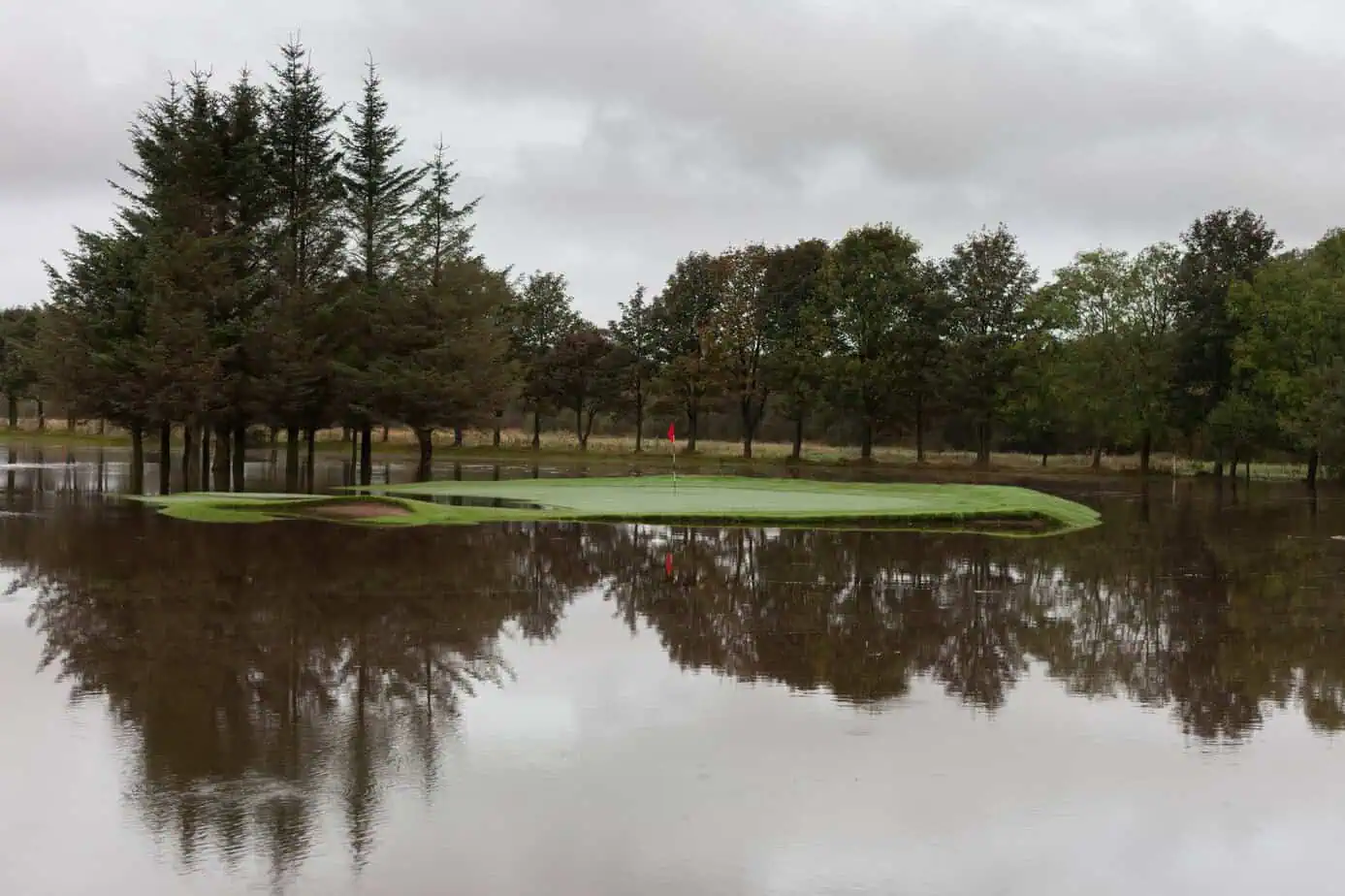Flooding on the green: how long does grass survive?
Golf courses worldwide are increasingly struggling with flooding caused by extreme rainfall or storms. In some cases, golf courses are underwater for days or weeks. What happens to the grass then? We put this question to Trygve S. Aamlid, Senior Researcher and Research Professor at the Norwegian Institute of Bioeconomy Research. In his research, he repeatedly deals with the unique problems on golf courses. His statements relate to cool-season grasses, which grow best in cooler temperatures and are therefore widespread in Northern, Central and Southern Europe.
How long does grass survive when it is completely flooded?
The cool-season turfgrasses will become weaker already after one to two days but will usually survive up to a week. It all depends on the grass species, the condition of the grass at the onset of the flooding, the soil type and the temperature. On the greens of the golf course bentgrass will usually tolerate flooding better than fescues.
To what extent does the outside temperature play a role? Suppose a golf course is flooded in December, and the ice freezes.
The higher the temperature, the shorter the duration of flooding can be tolerated. This is related to the respiration rate of the plants. Hence, the tolerance to flooding is far less in midsummer than in late fall and during winter. The tolerance to ice encasement during winter may vary from less than 20 days in annual bluegrass to more than 100 days for northern varieties of creeping bentgrass and red fescue.
The water has run out and there is a disgusting layer of mud on the grass. How long can the grass survive with this, and what do you do with the mud?
It is very important to remove this layer of mud/silt as soon as possible. Otherwise, this layer may form a crust that impedes the infiltration rate and gas exchange.
What direct adverse effects does flooding have on the soil? Does it lead to compaction, for example?
Water logging means that all the macropores, which otherwise supply the plant roots with oxygen, are filled with water. A lack of oxygen means energy deprivation, thus less ability to take up plant nutrients and – ironically enough – water.
Approximately how long does the regeneration time take?
Golf courses and especially greens that have been flooded should not be opened for play until the following measures have been completed and the grass has started to grow again:
- Remove or scrape off the mud/silt layer.
- Aerating the greens and tees, preferably in combination with additional topdressing (sanding)
- Extra fertilizer to compensate for what has been washed out.
What happens to the mud after it has been removed?
It should be dried and cleared of garbage and debris. Once dry, it can be mixed with other soil and used for landscaping purposes.
Is it even possible to use large machinery on wet fairways?
Where possible, light machinery should be used.
What is the biggest difference between a flooded green and a flooded fairway or tee?
Generally speaking, the lower the cutting height, the higher the vulnerability of the grass in this area.






 Flooding
Flooding